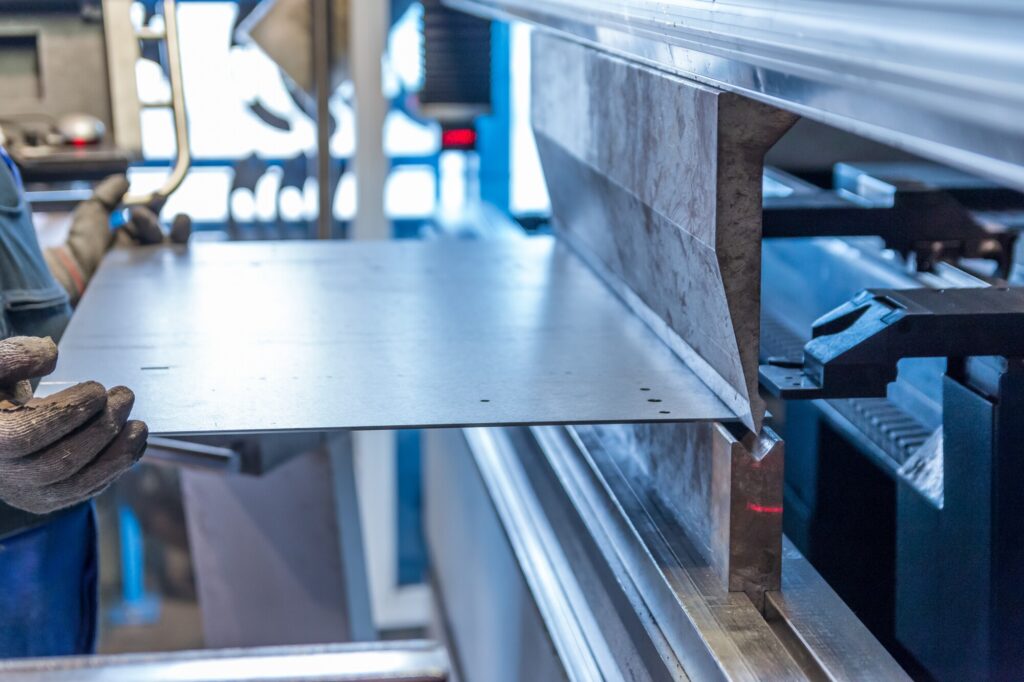Alpha Reo: Blazing A Trail in Reinforced Steel Solutions
Wiki Article
Innovative Fads in Steel Manufacture: Enhancing Resilience and Precision
In the world of steel manufacture, the search of resilience and accuracy has actually led to a wave of cutting-edge fads that are reshaping the industry. These patterns are not simply shaping the present but likewise laying the foundation for the future of steel fabrication, guaranteeing additional improvements in toughness and precision.Advanced Welding Technologies
In the realm of steel construction, the fostering of sophisticated welding technologies has considerably transformed the market's technique to attaining superior quality and precision in structural welds. Advanced welding technologies, such as laser beam welding and friction stir welding, have actually arised as game-changers in the area. Laser light beam welding uses a concentrated laser beam of light to join metal components with remarkable precision and rate, making it excellent for thin materials and intricate layouts. On the various other hand, friction stir welding creates unbelievably solid bonds by mechanically intermixing the molecules of the materials at the joint, removing the demand for thawing the metal. These technologies supply many benefits, including decreased heat-affected areas, marginal distortion, and improved mechanical residential properties in the welded joints. By leveraging these advanced welding strategies, steel producers can elevate the longevity, toughness, and precision of their architectural welds, satisfying the increasingly requiring demands of modern-day building projects.Robotic Automation in Construction
Welcoming robotic automation has come to be a cornerstone of contemporary steel manufacture practices, improving procedures and boosting performance across the industry. Robots are changing the means steel components are produced, using unmatched precision and speed while lowering human mistake. These automated systems can take care of repetitive jobs with regular accuracy, bring about better final result.One secret advantage of robotic automation in steel manufacture is the capacity to work around the clock without tiredness, dramatically increasing manufacturing outcome. This continual operation lessens downtime and accelerates job timelines, ultimately saving costs for makers. Additionally, robots can be programmed to do elaborate tasks that might be tough or unsafe for human workers, enhancing safety and security in the office.
Furthermore, robotic automation allows seamless combination with other electronic technologies, such as computer-aided design (CAD) software and Internet of Things (IoT) systems (steel fixing). This interconnected method boosts communication in between different phases of fabrication, enhancing operations and guaranteeing real-time surveillance and control. As the steel construction sector remains to develop, robotic automation stands apart as a transformative pressure driving performance and precision in producing procedures

High-Strength Alloy Advancement
The improvement of high-strength alloy development in steel fabrication is reshaping the industry's approach to improving material resilience and performance. High-strength alloys are engineered to display premium mechanical residential properties, such as boosted tensile stamina, durability, and rust resistance compared to typical steel grades. By incorporating these advanced alloys into construction procedures, suppliers can produce components that stand up to higher tension levels and severe environments, resulting in more long lasting and trustworthy output.One secret benefit of high-strength alloy development is the capability to minimize product thickness without jeopardizing structural honesty. This not just leads to lighter-weight parts yet additionally adds to set you back financial savings and boosted effectiveness in fabrication and assembly procedures. Furthermore, the enhanced strength-to-weight proportion of these alloys allows for the layout and building of structures with greater load-bearing capacities while lessening overall weight.
3D Modeling and Simulation Software Program
Advancements in steel fabrication processes have been substantially driven by the assimilation of cutting-edge 3D modeling and simulation software tools. These tools allow fabricators to create detailed virtual versions of their tasks, allowing them to envision the last item with accuracy before any physical work begins.
Sustainable Practices in Steel Manufacturing
Incorporating lasting practices right into steel manufacturing processes is essential for lessening environmental effect and ensuring long-lasting look at this now source accessibility. One vital sustainable technique is the adoption of energy-efficient innovations to lower greenhouse gas discharges throughout the steel production process. This consists of using renewable resource sources, such as solar or wind power, to power steel plants and carrying out energy-efficient tools to optimize energy use.One more crucial element of lasting steel manufacturing is the responsible sourcing of resources. This entails ensuring that the iron ore and other resources made use of in steelmaking are gotten from environmentally friendly and honest resources. By advertising transparency in the supply chain and adhering to strict environmental requirements, steel suppliers can minimize the negative impacts of resource extraction on regional ecological communities and communities.

Final Thought
Finally, the innovative trends in steel manufacture such as innovative welding innovations, robotic automation, high-strength alloy development, 3D modeling and simulation Website software program, and lasting practices are boosting the longevity and accuracy of steel products. These advancements are changing the steel construction industry by boosting effectiveness, sustainability, and quality. It is clear that the future of steel construction hinges on welcoming these advanced modern technologies to satisfy the needs of contemporary building and construction and manufacturing sectors.In the realm of steel manufacture, the pursuit of longevity and precision has actually led to a wave of innovative patterns that are reshaping the market.In the world of steel fabrication, the fostering of cutting-edge welding modern technologies has substantially revolutionized the market's strategy to achieving remarkable quality and precision in architectural welds. As the steel manufacture industry proceeds to advance, robotic automation stands out as a transformative force driving effectiveness and accuracy in manufacturing processes.
Additionally, reusing and recycling steel scrap and waste products play a substantial duty in enhancing the sustainability of steel production. metal fabrication melbourne.In conclusion, the ingenious patterns in steel manufacture such as sophisticated welding innovations, robotic automation, high-strength alloy advancement, 3D modeling and simulation software, and lasting methods are boosting the toughness and accuracy of steel items
Report this wiki page